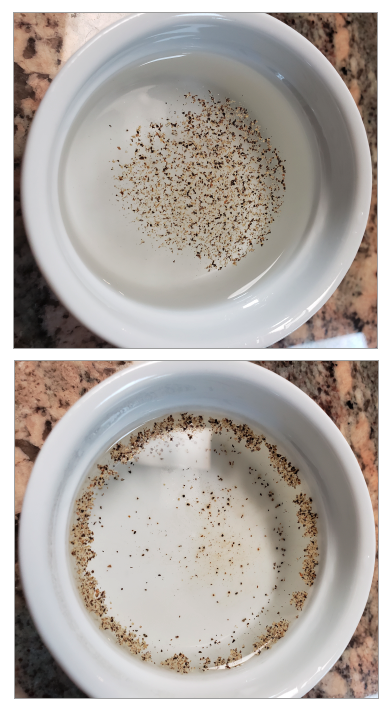ChemE outreach takes new forms
Adam Dove
Sep 11, 2020
Now more than ever, it’s important to bring a diversity of young minds into the field of chemical engineering in order to tackle the challenges of today and tomorrow. That’s why the Department of Chemical Engineering (ChemE) remains committed to reaching out into the community to spark young minds of all backgrounds through a number of outreach programs, led in Chemical Engineering by Assistant Teaching Professor Ilhem Hakem and College of Engineering Associate Dean for Undergraduate Studies Annette Jacobson.
“Outreach to our youth about opportunities in the engineering profession is more important than ever,” says Jacobson. “It’s an educational experience on many levels—first, by providing the young students a chance to learn about engineering and how it is connected to science and mathematics, and second, by providing opportunities for faculty and university students to promote our profession to a broader audience at an appropriate level that has impact for the future.”
But introducing young students to engineering in exciting and engaging ways faces new challenges in a time when most activities, both on campus and off, have gone largely remote. Thankfully, CMU chemical engineers are used to facing challenges, and meeting them with innovative solutions.
The college-wide Summer Engineering Experience (SEE) program, for instance, which offers middle school students the opportunity to learn about engineering through hands-on problem solving activities led by Carnegie Mellon’s world-class instructors, is typically held on CMU’s campus. This year, however, due to the remote nature of many on-campus activities, SEE had the opportunity to expand its program even further, an effort that was successfully led by Megan Fahey, assistant director of strategic programs in the College of Engineering.
Outreach to our youth about opportunities in the engineering profession is more important than ever.
Annette Jacobson, Associate Dean for Undergraduate Studies, Carnegie Mellon University College of Engineering
In addition to lessons from different engineering disciplines across the college about energy engineering and alternative fuels, Hakem and Jacobson led two different sessions over the course of the two week program, held from July 20 to 31, introducing nearly 50 middle school students to chemical engineering and all of the many ways that chemical engineers can change the world. And thanks to the virtual nature of this year’s program, these students didn’t have to live near the Pittsburgh campus in order to attend.
The wide reach of these virtual events also allows CMU chemical engineers opportunities for collaboration, working with PACyber as part of their Virtual Engineering Exploration Experience (VEEE) program this summer, which involved faculty from eleven different engineering programs in Pennsylvania. Hakem and Jacobson, along with a group of four ChemE graduate students—Kyle Tynan, Tom Krumpolc, Tafadzwa Chigumira, and Lynn Mao—met virtually with over 40 high school students from across the state of Pennsylvania to introduce them to the chemical engineering profession. The graduate students presented a panel discussion about their background and current experiences in chemical engineering, and answered questions from the participants.
Their presentation used a number of accessible mini-experiments to demonstrate different aspects of chemical engineering, such as asking students to observe the behavior of pepper sprinkled on water, then adding soap to see how the pepper disperses, or adding food coloring to milk, then soap, resulting in a visual of molecules in motion and demonstrating diffusion, an important concept in chemical engineering.

Source: Annette Jacobson
In an easy at-home experiment, sprinkling pepper into a bowl of water, then adding soap, demonstrates the concept of diffusion.
“Using concrete examples from everyday life that students have likely observed is a great way to bring more high-level scientific concepts down to an easily understandable level,” says Jacobson. “This is the beauty of chemical engineering—while informed by fundamental scientific observation, it is always grounded in the real-world application of those scientific concepts to create useful products for everyday life.”
The goal is to help kids understand everything chemical engineers make in the world around them. Because in reality, most everything we use on a daily basis was made in part by a chemical engineer. From plastic toys to contact lenses, cosmetics to medicine, paint, shampoo, plastic wrap, and even carpets and clothing.
“As graduate students, we are often immersed in our research, so a chance to share our enthusiasm for what we do is always appreciated,” says ChemE Ph.D. student Tafadzwa Chigumira, who serves as outreach chair of the Chemical Engineering Graduate Student Association along with fellow ChemE Ph.D. student Dasia Aldarondo. “The VEEE event was fantastic as it afforded us a chance to talk about our journeys to becoming the engineers we are today. It’s a good feeling to be able to pass on some of what we learned to such eager minds.”
These outreach efforts aren’t only meant to draw students to Carnegie Mellon, however, but to the profession of chemical engineering as a whole. That’s why Hakem uses the models of success developed here at CMU to help other institutions improve their own outreach programs. To that end, Hakem presented at this year’s American Society for Engineering Education (ASEE) conference, sharing a number of modules she and Postdoctoral Fellow Dr. Diane Nelson developed on the subject of the plastics crisis and sustainability for last year’s Summer Academy of Math and Science (SAMS) program. The SAMS program, held in the summer over a span of six weeks, provides opportunities for current high school sophomore and junior students from underrepresented communities to explore STEM-related fields, and earn college credit while doing it.
“The dissemination of program content, examples, and experiences to the wider engineering community is very important,” says Hakem. “The annual ASEE conference is the largest conference dedicated to engineering education and hence provides an ideal platform to disseminate our results and provide recommendations, ideas, and materials to others who might be interested in implementing similar programs.”
